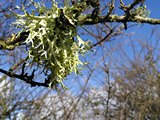Lichen Groups - The Index
Introduction
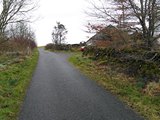
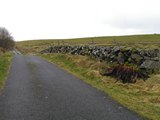
This study has been carried out in order to learn a little about the wide diversity of lichens readily found close to the author's home. Being in South West Scotland, it is a region of high rainfall, little sunlight and low pollution: the conditions favoured by many species.
Barwinnock Herbs is a small farm bisected by an unclassified, single track, no through road and although the study is limited to just 100m of that road, a good range of habitat for lichen is available. At this point, I should be completely honest and admit the study was undertaken while I was still recovering from a quite severe achilles tendon injury and consequently, was unable to walk much further. Ironically, the injury happened while I was attempting to repair one of the stone dykes now being examined. I hope you will accept this does not detract from the purpose of these web pages to demonstrate the wide diversity of lichens that may be found growing in a very small area.
Near to the farm cottage and along the road-side, there are short stretches of dry stone dykes alternating with willow trees and together, these provide a full range of habitats: from exposed or sheltered, North or South facing and on stone or bark. Some of the stone dykes are sheltered and North facing and, being shaded and damp, are host to mostly moss rather than lichen but the exposed lengths of dyke carry a wide spectrum of species.
Although exposed, the willows drip with silver-green bunches of growth and it was these that first attracted my attention.
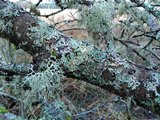
Forms of lichen
This unusual life form is an association of two interdependent organisms, alga and fungus which together, create stable and consistent physical forms. The fungal partner is unable to photosynthesise but, unlike other fungi it does not gain sustenance by breaking down dead material. Instead, its food is obtained from the excess created by the alga hosted within its structure. In return, the alga is provided with a comfortable and well protected home. Interestingly, the fungus on its own does not create the physical forms we recognize but if grown yields an amorphous mass. The physical body of a lichen is referred to as the thallus.
The physical form of the thallus is the first level of classification and includes the following groups:
- The Crustose thallus sits closely and entirely on the substrate.
- Foliose have leaf like structures partially attached.
- Fruticose is a shrubby or bush-like structure attached at one point.
Crustose Group: both fertile and sterile forms.
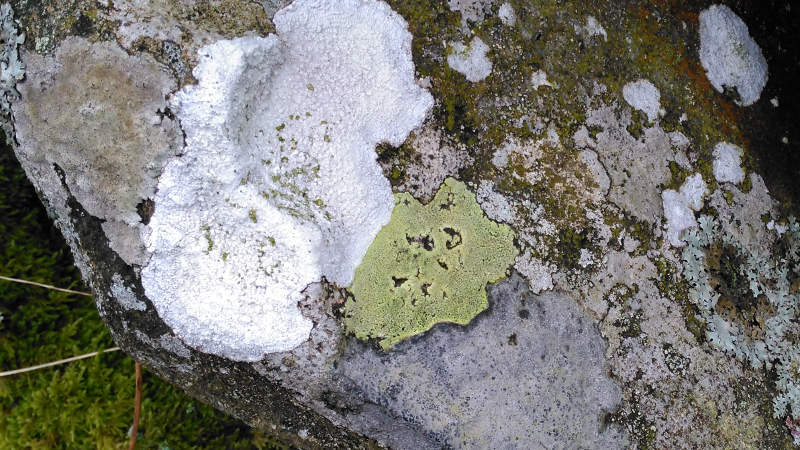
The Crustose thallus sits closely and entirely on the substrate and may be crust like or, as with some species, be thin and tightly bonded almost like a layer of paint.
There are three layers through the crustose thallus. At the surface, referred to as the cortex, there are tightly packed fungal filaments which provide protection for the alga that make up the second layer. At the base of a crustose thallus is the medulla: loosely packed fungal filaments directly attached to a stone or bark substratum.
Both sterile and fertile species may be found. Fertile species produce various fruiting bodies from stalked and mushroom like, to pimples almost flush with the surface. Sterile species are able to propagate by vegetative means having isidia or soredia that contain both the fungal and algal partners and these can easily break away to become established in a new location. The soredia on the surface of some crustose species gives rise to their powdery texture.
Foliose Group: leaf-like.
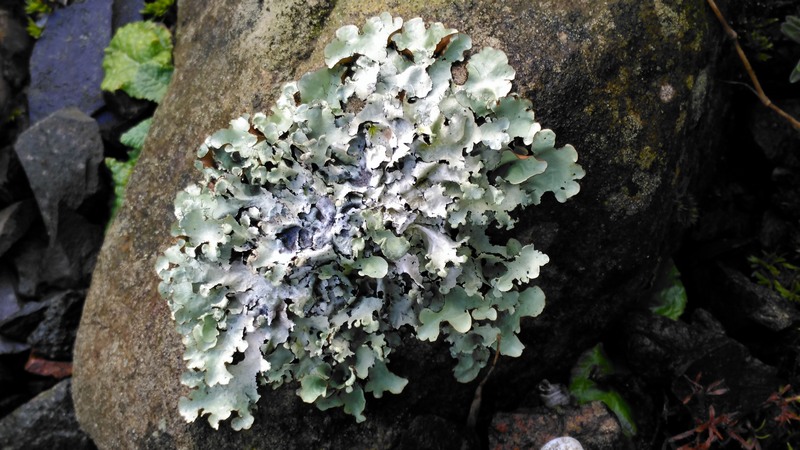
Much of the foliose thallus is in contact with the substrate except the leaf-like lobes which, being curled up, may be easily removed.
There are two more layers through a foliose thallus than through the crustose structure. In addition to an upper cortex, algal layer and medulla, there is a lower cortex of tightly packed fungal filaments and then, often, a final layer of root like structures, called rhizines, through which attachment is made.
The lobes have distinctly different upper and lower surfaces, as one would expect of a leaf: a characteristic referred to as "dorsiventral".
Fruticose Group: shrubby or bush-like.
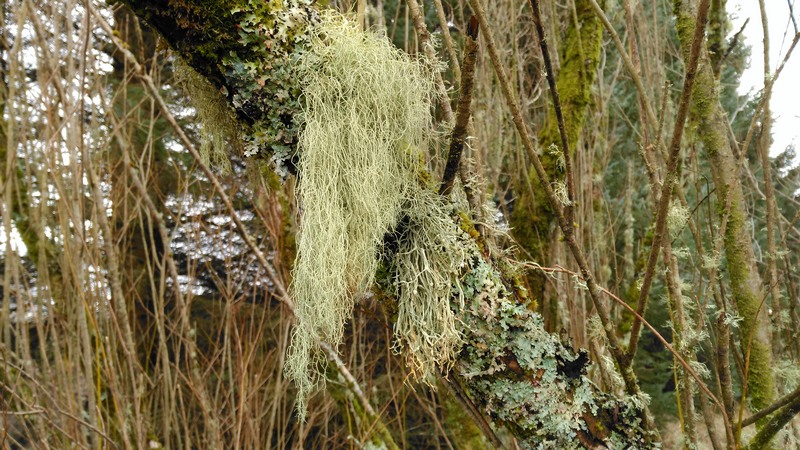
Their shrubby or bush-like, structure is attached at a single point and the thallus is pendulous or stands up away from the substrate.
The thallus structure is symmetrical with an outer cortex over the inner algal layer. Usnea, the beard lichen, has radially symmetrical fibres and a supporting central core. Ramalina is symmetrical across the thickness of its lobes and there is no difference between the upper and lower surfaces.
Evernia prunastri "Oak Moss", which has the superficial appearance of the fruticose Ramalina genus, is classified as foliose because there is a small difference between its upper and lower surfaces. Although not strictly correct, on this web-site it is placed with the fruticose genera.
